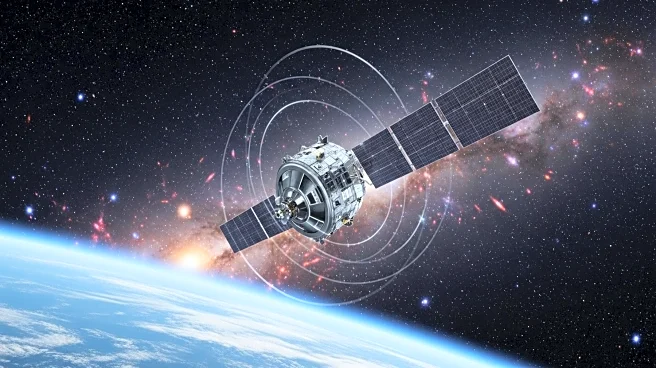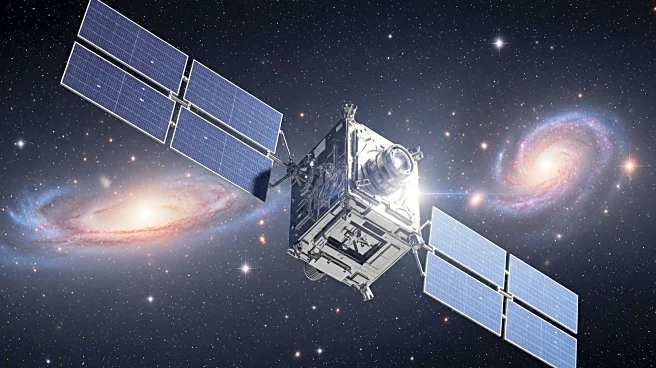What is the story about?
What's Happening?
Space infrastructure is increasingly becoming a target for hostile powers, according to Maj. Gen. Paul Tedman, head of the UK Space Command. Satellites are critical for modern life, supporting GPS, weather forecasting, crop monitoring, disaster response, global finance, and defense systems. However, most commercial satellites are designed to be cheap and light, making them vulnerable to attacks. Innovations in materials science have made resilient shielding materials more affordable and lightweight, but cultural shifts are needed to prioritize resilience in spacecraft design.
Why It's Important?
The growing threats to space infrastructure have significant implications for global security and the functioning of modern society. Satellites play a crucial role in various sectors, and their vulnerability could lead to disruptions in essential services. The advancements in materials science offer opportunities to enhance satellite resilience, but cultural changes in spacecraft design are necessary to ensure robust space infrastructure. The recognition of space as a 'warfighting domain' by military leaders underscores the need for strategic investments in resilience and security.
Beyond the Headlines
The potential for space-based conflicts highlights the need for international cooperation and regulatory frameworks to address security challenges. The development of resilient space infrastructure could drive innovation and investment in materials science, benefiting industries beyond aerospace. The cultural shift towards prioritizing resilience in spacecraft design may influence broader trends in engineering and technology, promoting sustainability and long-term planning.
AI Generated Content
Do you find this article useful?














